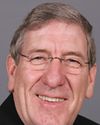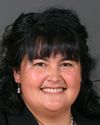Sorry. I'm trying to get in as much information in five minutes as I can.
The Bridge Clinic is a community health clinic that was established in September 1994 as a partnership between British Columbia Multicultural Health Services and the Immigration Settlement Services Society in the Vancouver Coastal Health Authority. Its purpose is to address the primary health care needs of refugees with or without legal status.
Once the family leaves Welcome House and relocates into their new housing, there's insufficient support available to assist them to adapt and integrate to their new life. The members of many of the families I visited are often illiterate and innumerate in their own language, have no English skills, and suffer from the violence of war and traumas of many years of living in refugee camps.
It is usually overwhelming for them. Many need basic help dealing with modern life: toilets, electricity, shopping, money, parenting, and schooling. The list is endless. It is hard to know where to begin. I will limit my talk to specific challenges to refugees trying to access health services.
Since the IRPA, these primary health screens have detected an increase in refugees suffering from chronic diseases such as diabetes, hypertension, heart disease, HIV, and mental health conditions such as chronic depression and post-traumatic stress disorder.
At present, Fraser Health Authority is being faced with the challenge of providing primary care to this growing population. Many local physicians and walk-in clinics are unable to provide service to refugees with no English and complex medical and social conditions, resulting in the only access to primary care being the emergency department.
The situation for Burnaby is worsening, as the Bridge Clinic is no longer able to offer its service beyond the first three months of refugees' arrival, due to service demands and funding cuts. With the increasing complexity of medical conditions and necessity for multi-medical specialists to respond to these conditions, there is a resulting increase in the need for medical translators. Clients often fail to receive treatment for communicable diseases such as HIV, TB, malaria, and intestinal parasites, and children fail to receive services from outside agencies to diagnose and treat conditions.
Although Fraser Health has language services available to health care providers, most other community agencies do not have the funding available to pay for translators. Public health nurses are more and more having to take on the case management and coordination of care in the community for this burgeoning population. In the last seven months, Burnaby Preventive Health Services has spent $19,000 in translation costs for that area of health alone.
In British Columbia, unlike the rest of Canada, free ESL classes are provided to ELSA level three only, after which they must pay for further instruction. Level six is considered basic conversational English. The expectation on refugees is that after one year on the resettlement assistance program, they will then find employment and begin to pay back the government loan incurred to relocate. As research indicates, it takes five years of intensive immersion in ESL programs before conversational English is achieved. This will be a growing problem for Fraser Health for many years.
At present, most tertiary and specialist care centres are located in Vancouver, which poses the following problems:
Refugees unable to speak or read English cannot be informed of appointments without a translator, and then are challenged on how to reach them, as they are unable to use the transit system. There are no systems in place to facilitate this and no established communities with volunteers with linguistic skills.
Funding for travel to refugees is designed for one travel zone, when hospitals in Vancouver are three zones away. The cost of attending appointments to the economically disadvantaged family results in them missing appointments or not being able to afford food that week. Pre- and post-natal care for HIV-positive women is only available in Vancouver at the Oak Tree Clinic. If the woman has a primary physician, the medication could be couriered to the family physician. Once again, access to a primary physician for this population is severely limited. This leads to the families having to go to Vancouver to collect their medication.
Under existing legislation, disabled refugees are not able to apply for designation as disabled until one year after their arrival in Canada. At present, limbs and prostheses are available from a charitable institution in Vancouver that has no translators or means to assist these individuals with travel costs or physiotherapy.
Non-English-speaking refugees are unable to access birth control, due to their limited access to primary care physicians. Attempts to facilitate organizations such as OPTions for Sexual Health, formerly Planned Parenthood, were unsuccessful due to the lack of funding for translators. Finding pharmacists in Burnaby to participate in the interim federal health pharmacy benefit system is a challenge. Reasons for this include the extensive paperwork required to be submitted by them to obtain financial recompense and the delay of up to six weeks to receive payment. Consequently, there are times when the refugees living in Burnaby are unable to fill their prescriptions unless they travel to Vancouver.
An appropriate birth control option for non-literate refugees with psychosocial conditions who are unable to administer daily medication is the intra-uterine device, IUD, which is not covered by the interim federal health act. This means that the refugee must wait for 12 months until they are covered by welfare to obtain their IUD. This often results in unplanned pregnancies that place further financial demands on the economically disadvantaged families.
Vitamin D supplements for children are not covered, which is a particular problem for a group that has suffered years of malnutrition prior to coming into Canada.
The impact of the numbers of refugees arriving here who are HIV-positive is only just beginning to be felt, and will have an ongoing effect on the whole health care system.
Families with children with special needs are the most challenging and hardest to assist. Unable to read, write, or speak English, these families are expected to navigate, with no additional support, various government forms and applications for equipment and services for their children. Often these children do not receive treatment and are lost in the community until school entry.
At present, there are no special resources for adults, youth, or children who do not speak English and suffer from chronic depression and post-traumatic stress syndrome. As a result, it is very difficult to develop strategies and provide services. The combination of medical and psychosocial issues and insufficiently supported translocation to Canada is resulting in increasing numbers of crises and suicide attempts.
Many of the refugees arrive in Canada after years of malnutrition that has long-term effects on their physical and dental health. As a result, adults and children often have abscesses, and have sustained facial and dental injuries from acts of violence, causing severe pain. It is not unheard of for these adults to extract their own teeth because they can find no source of help.
Frequently, refugees are unaware they have emergency dental coverage through the interim federal health program. Dental offices have expressed concern that they have provided emergency dental treatment and not been paid by the interim federal health act. The pre-authorization process for dental treatment under the interim federal health program can be cumbersome and unpredictable. There appear to be inconsistencies in what is approved and what is not.
Research has shown that adults with decay transfer cavity-causing germs to their young children. By not treating the dental disease of the adults, we are ensuring that the next generation will be at high risk for tooth decay, and so the cycle continues. It is not uncommon for treatment costs for very young children to exceed $2,000, not including the $500 per hour for the general anesthetic that is required to provide treatment safely to already traumatized children.
After one year as permanent residents, the children may become eligible for the healthy kids program, which pays for some dental treatment and eyeglasses for children younger than 19. Unfortunately, their parents are not eligible for any free dental care, even during pregnancy, when dental bacteria may result in pre-term or low birth weight babies.
In conclusion, there needs to be an innovative, multi-service approach that helps immigrants and refugees while facilitating a stronger, more cohesive, and healthier community, and reducing the costs of translation services. The hub would provide such an answer.



